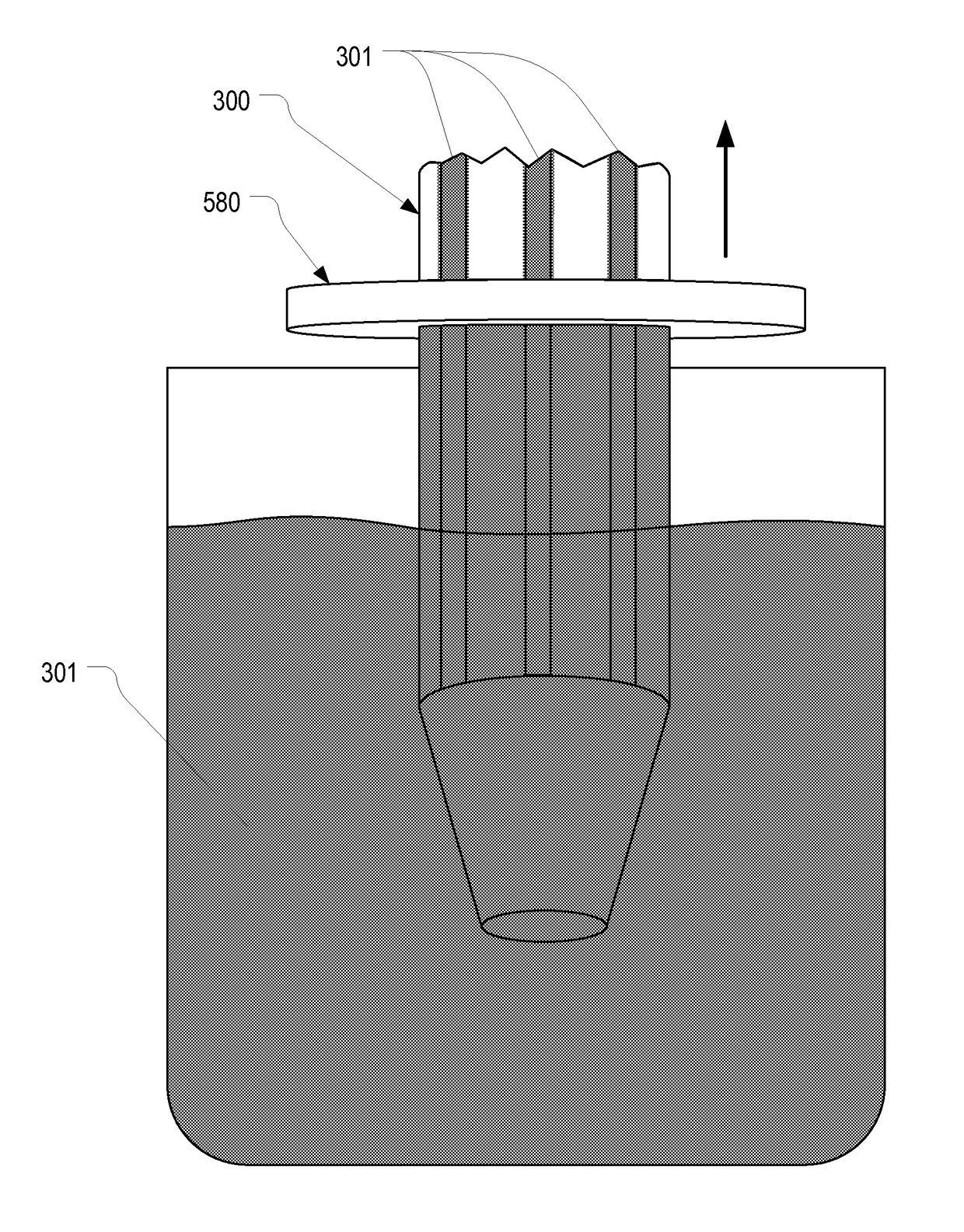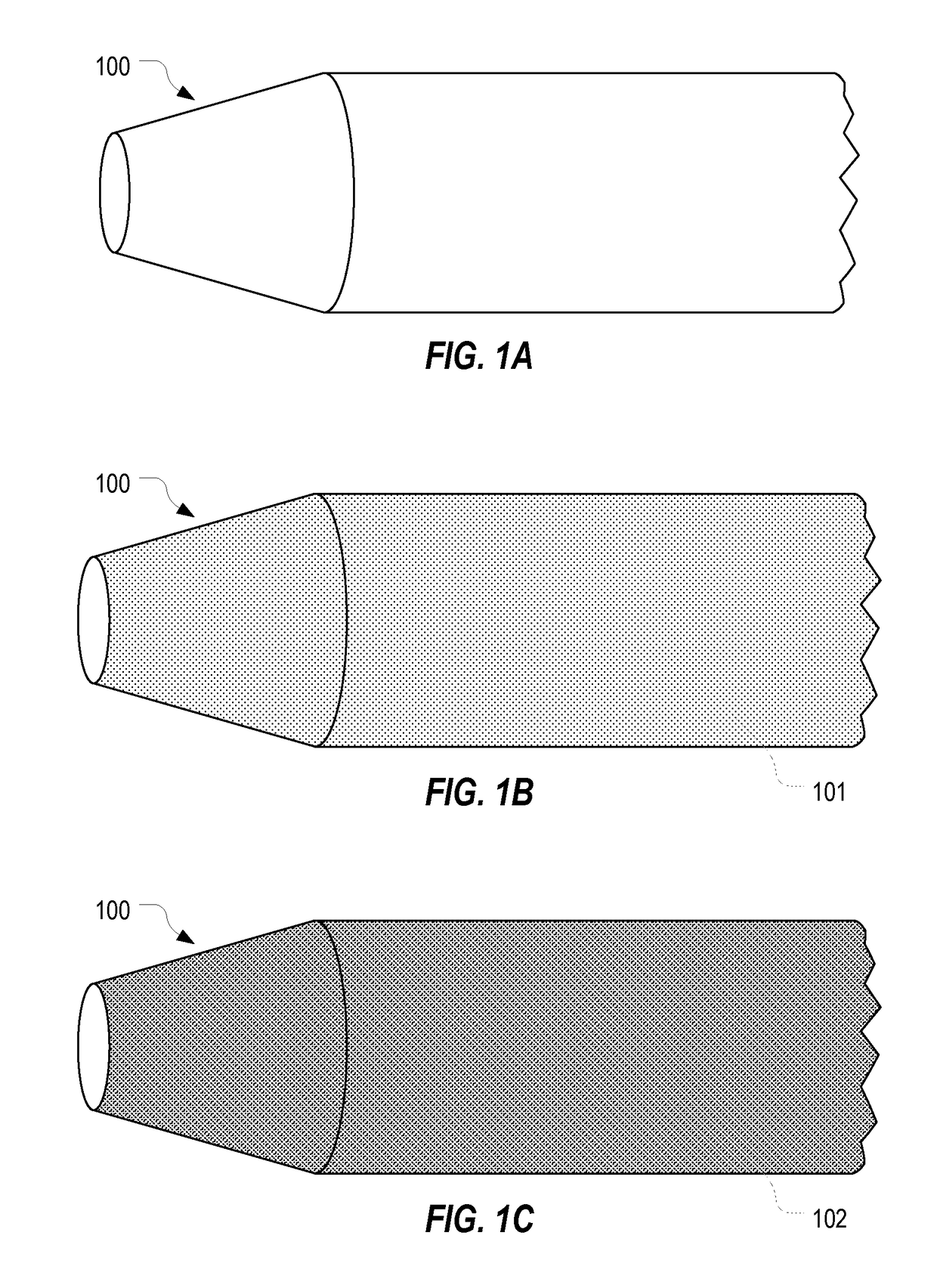Catheter tubing with extraluminal antimicrobial coating
a technology of antimicrobial coating and catheter tubing, which is applied in the field of catheters, can solve the problems of coating typically used on the central vein catheter, still a risk of nosocomial infection, and insufficient peripheral intravenous catheter techniques
- Summary
- Abstract
- Description
- Claims
- Application Information
AI Technical Summary
Benefits of technology
Problems solved by technology
Method used
Image
Examples
example 1
nhibition Test
[0080]20 gauge×1.25 inch catheters were pretreated to form an antimicrobial coating by dipping the catheters in a solution consisting of 5% CHG, 20% water, and 75% ethanol. The coated catheters were allowed to dry for two minutes. The coated catheters where then sprayed with a silicone lubricant emulsion containing 0.5% CHG w / w. Catheters that did not receive the pretreatment were also sprayed with the same lubricant emulsion. Small segments of both the pretreated and untreated catheters were then subjected to a zone-of-inhibition (ZOI) test. The pretreated catheters demonstrated up to 19 mm ZOI for Staphylococcus epidermidis, while the untreated catheters demonstrated only 1.5 mm ZOI.
PUM
| Property | Measurement | Unit |
|---|---|---|
| vapor pressure | aaaaa | aaaaa |
| w/w | aaaaa | aaaaa |
| radiopaque | aaaaa | aaaaa |
Abstract
Description
Claims
Application Information
 Login to View More
Login to View More - R&D
- Intellectual Property
- Life Sciences
- Materials
- Tech Scout
- Unparalleled Data Quality
- Higher Quality Content
- 60% Fewer Hallucinations
Browse by: Latest US Patents, China's latest patents, Technical Efficacy Thesaurus, Application Domain, Technology Topic, Popular Technical Reports.
© 2025 PatSnap. All rights reserved.Legal|Privacy policy|Modern Slavery Act Transparency Statement|Sitemap|About US| Contact US: help@patsnap.com



